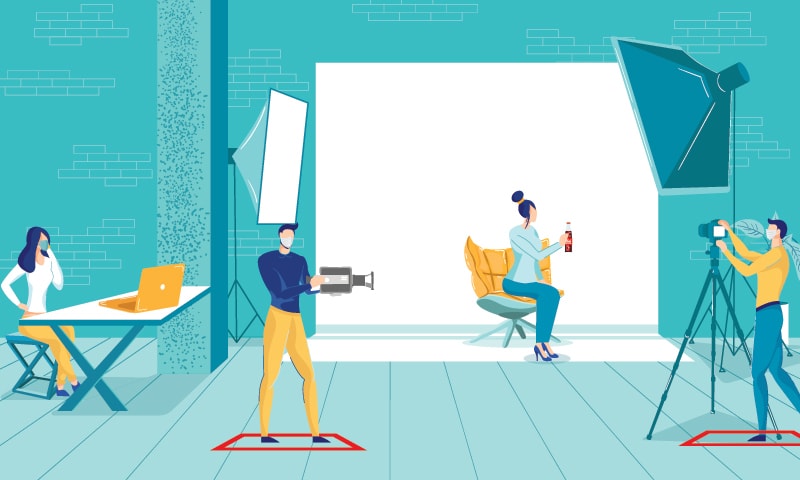Shooting In The New Normal
Published in Sep-Oct 2020
The lockdown is over and for much of Pakistan’s population (and most of our friends and family for that matter) the pandemic is over. Of course this is not so. Yet, whether we are in denial or in a state of constant paranoia, one thing is certain, the pandemic has changed the way we function professionally, especially in the advertising business.
Some agencies were quick on the uptake and had already enforced hygiene protocols before the lockdown. A few had anticipated the WFH policy from their regional counterparts and slid into the new normal fairly easily. However, the economic slowdown and the complete halt on productions translated into an uncomfortable period of silence for many agencies. Some responded proactively with enthused brand plans for the new normal and Covid-19 inspired edits using stock footage – but this dead period also coincided with an economic downturn, with many clients cutting down on marketing budgets.
The lockdown eased and productions resumed with alien SOPs. A reduction of on-ground staff, regular disinfection and mandatory masks. Shoots were monitored remotely which was an experience in itself. All cast members and immediate crew were tested before each shoot. In the case of celebrities, they were often shot on their own with the rest of the cast shot separately to ensure their safety. For agencies and clients, this meant a new level of concentration. No good-natured bantering between takes, no mulling over the lunch orders (Xander’s or Espresso? Why not both!) and smoke breaks. You had to stay focused on the laptop where the shoot was streamed and respond swiftly with comments on WhatsApp. (That is when you weren’t spotting a non-masked crew member and berating the production team on this laxity.) On a lighter side, this also meant that candid conversations between cast members could be heard by a much wider audience. Our lips are sealed on that account.
These SOPs will not ease any time soon. There is already news of a second, albeit smaller wave post September. A third is being predicted in the winter months when flu season coincides with the shaadi season. At any rate until a vaccine is found – which could be a year or five – any sensible agency will have to comply with the same stringent protocols if they want to avoid a coronavirus outbreak on set. This means resisting the temptation to visit the set (translation: keeping enthusiastic young creatives and clients out of the studio), chasing the production house to keep the crew to a minimum (a 30 to 50% cut) and operating with regular set disinfections, mandatory masks and so on.
Beyond the actual production, there are implications for the creative process as well. Agencies and clients would be well-advised to avoid large scale shoots with a mammoth cast (it’s far easier to monitor four or five people as opposed to 200). There will be people who will scoff at your paranoia. Let them. This is not just about health and hygiene. It is also about cost efficiencies. Marketing budgets are shrinking. Keep your concepts simple and small, with minimum set changes. You don’t need celebrities to make your concept work. They are expensive and the additional protocols required (especially with Covid-19) are just not worth it. Say goodbye to shooting abroad. With surges expected in Europe and rising costs of travel, you are better off having your tailor to stitch a Zara knockoff for you. Plus, shooting in European locations may also mean decreased hours and smaller crews – so a shoot that would normally take two days will now take three. Not only that, you may have to rethink anything of a tactile nature – ruffling a child’s hair or pinching a cheek, holding hands, etc. Of course this has more implications for feature films – imagine a cinematic experience with no fight scenes or romantic intimacy.
And don’t scoff at multinational functionality anymore. Gone are the days of the 90-second commercials. Don’t cringe and do pushback the client’s request to show the product more than once and keep the duration to a minimum. There is a reason for that push from the client. The consumer is no longer in the mood to buy your brand on the whim of a song and a dance; they need a valid reason to part with their hard-earned cash so give them that reason. Simple stories well told with strong product integration are also easier to execute and more cost-effective.
Until then get used to monitoring shoots remotely and stay safe.
S. Hyder is a creative working in a Pakistani advertising agency.




Comments (0) Closed